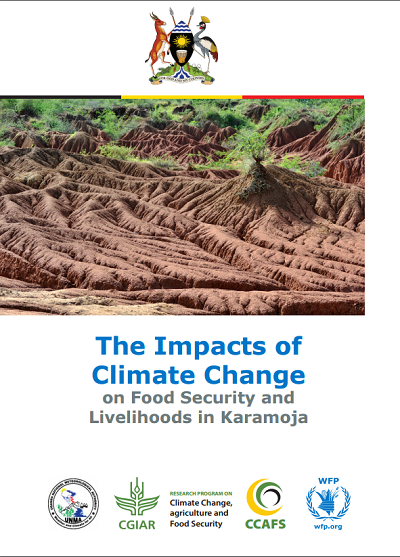The changing climate of Karamoja Region in Uganda: Impacts and communities’ adaptation strategies

Research from the Karamoja region, located in northeastern Uganda, examined rainfall and temperature changes over a 35 year period, perceptions of climate chage, and how climate change impacted livelihoods.
Like many communities in Sub-Saharan Africa, the population of the Karamoja region, located in northeastern Uganda, is highly dependent on subsistence agriculture for food security and livelihoods. Most of the families in the region practice both agro-pastoral and pastoral farming in an effort to meet food security and livelihood needs, making them extremely vulnerable to climate change.
In a recently released report, The Impacts of Climate Change on Food Security and Livelihoods in Karamoja, the effects of climate change on household food security and climate change adaptation strategies were examined using data from Karamoja. The research was conducted jointly by the Climate Change Department (Ministry of Water and Environment), Uganda National Meteorological Authority (UNMA), CGIAR Research Program on Climate Change, Agriculture and Food Security (CCAFS), and World Food Programme (WFP). Uganda is one of the CCAFS target and site integration countries in East Africa where agricultural systems are mainly rain-fed and highly vulnerable to climate change and variability.
The study conducted rainfall and temperature changes over a 35 year period and household levels assessment of the perceptions, and impacts of the changing climate on the community’s livelihoods. Findings revealed that the Karamoja region has experienced changes in average rainfall and temperature over a 35-year period. There is evidence of increasing rainfall amounts in the months of the short rainy season that starts from September through to November. One impact of this prolonged rainfall is extension of the growing season.

Figure 1: Decadal change in average monthly rainfall estimates for Karamoja. Error bars represent standard deviation in monthly rainfall estimates. Source: The Impacts of Climate Change on Food Security and Livelihoods in Karamoja
Average monthly temperatures in the Karamoja region are also increasing, affecting livestock forage quality and leading to negative livestock productivity.
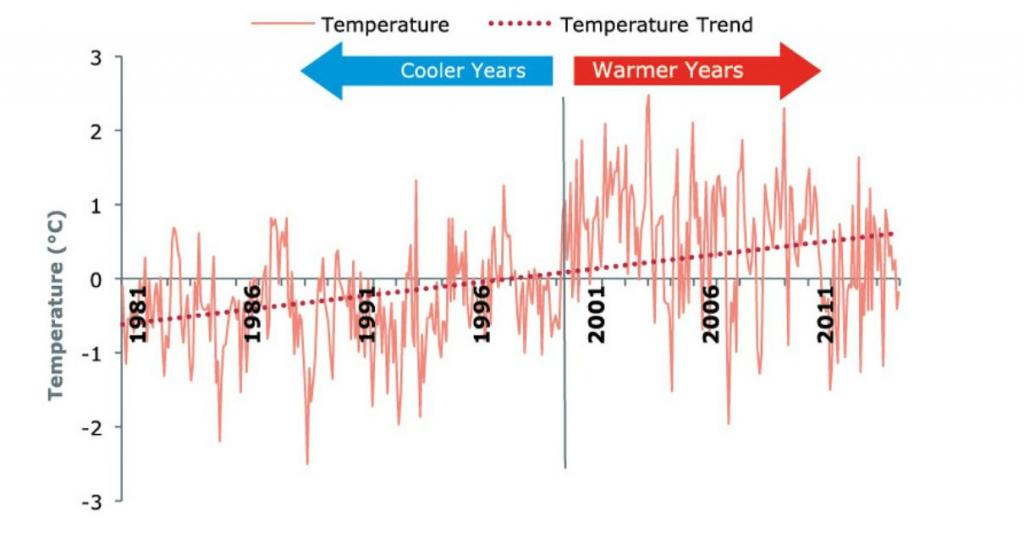
Figure 2: Average monthly temperature anomalies for Karamoja from 1981 to 2015. Source: The Impacts of Climate Change on Food Security and Livelihoods in Karamoja
The noted change in rain patterns in the Karamoja region, which include the Kaabong, Abim, Kotido, Moroto, Amudat, Napak, and Nakapiripirit districts, means that farmers are less able to depend on historic weather patterns when determining when to plant and harvest crops. Other climate shocks, including droughts and floods, impacted nearly 75 percent of respondents. For many farmers, the impact of erratic weather events leaves them vulnerable to food security and livelihood disruption. In the most impacted areas, coping strategies included begging, borrowing, or selling assets to meet household needs.
Despite the frequent occurrence of extreme weather events and shifting weather patterns, the perception of climate change amongst the community remained limited.
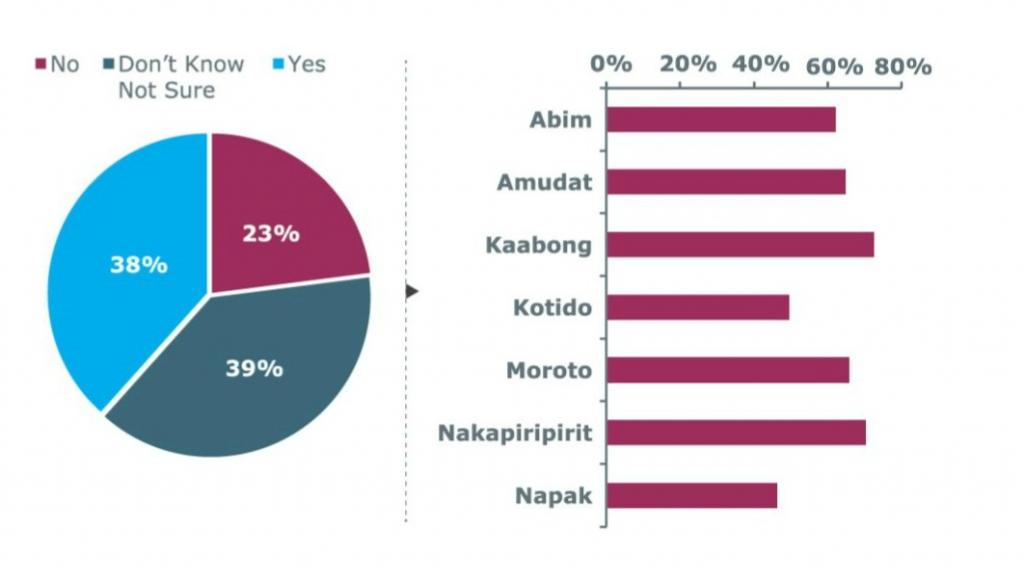
Figure 3: Have you noticed any changes in weather patterns or climate over your lifetime? Respondents who answered 'no' and 'not sure' or 'don't know' expanded to district level. Source: The Impacts of Climate Change on Food Security and Livelihoods in Karamoja
Nearly two-thirds of respondents from the region reported that they either did not notice or were unsure of climate change. Notably, female-headed households were less likely than their male counterparts to notice weather variability. These findings contrast with studies which demonstrate that African women are more attuned to the changing climate than men, with the amount of labor and time they invest in agriculture cited as the reason (see UNDP Report). Researchers note the troubling nature of these findings as it reveals the lack of preparedness from many farmers, especially women, and the decreased likelihood that farmers will adopt climate-smart farming practices.
Climate information services (CIS), which includes weather forecasts and agro-advisory services about agriculture production and management, are often accessed by farmers through radio. CIS is also a method of informing farmers of climate and weather changes as well as adaptation strategies. Researchers found that, in the Karamoja region, overall access to CIS is low.
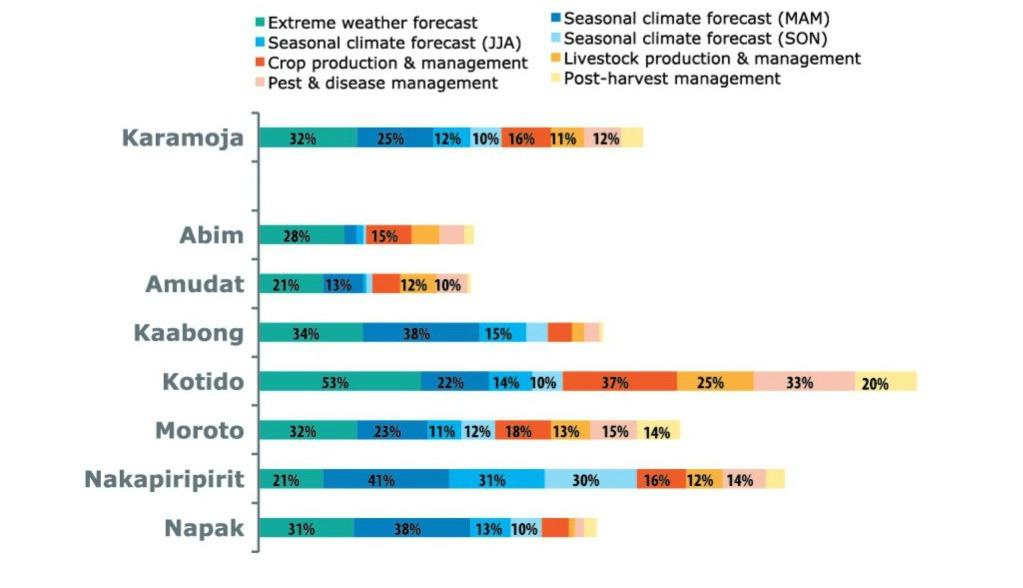
Figure 4: Did you have access to [information type] information in the last 12 months? Percentage of respondents who answered 'yes' according to the information types provided. Values under 10% not labeled. Source: The Impacts of Climate Change on Food Security and Livelihoods in Karamoja
Female-headed households may have less access to CIS as they are less likely to own a radio.
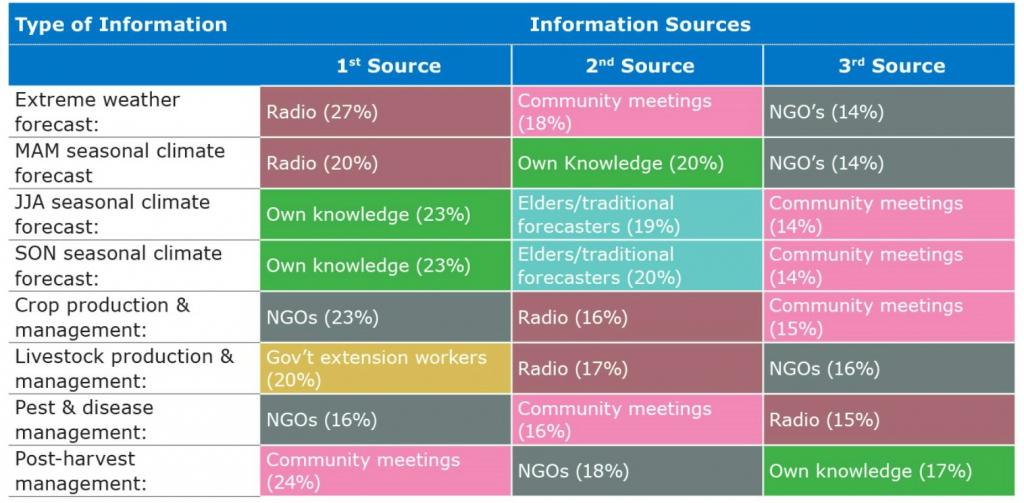
Table 1: Please list the main sources you received this type of information from in the last 12 months. Three most frequently cited sources shown for each information type. Results shown at regional level. Source: The Impacts of Climate Change on Food Security and Livelihoods in Karamoja
These findings led the researchers to a number of recommendations that could assist with climate change adaptation and preparedness in Karamoja region. Some of the recommendations include water harvesting and conservation, which will reduce the dire consequences of erratic rainfall patterns. Households should also be made aware of the hazards that climate change poses. Part of this process includes improving access to CIS and working to incorporate climate information into already established information systems. Finally, as findings indicated that female headed households were less likely to be aware of climate change and had less access to information produced through both CIS and indigenous information systems, gender must be explicitly incorporated into climate change adaptation and services.
Mary Nyasimi is a Science officer and Kathlee Freeman is a Communications Assistant at CCAFS Gender and Social Inclusion Flagship.

